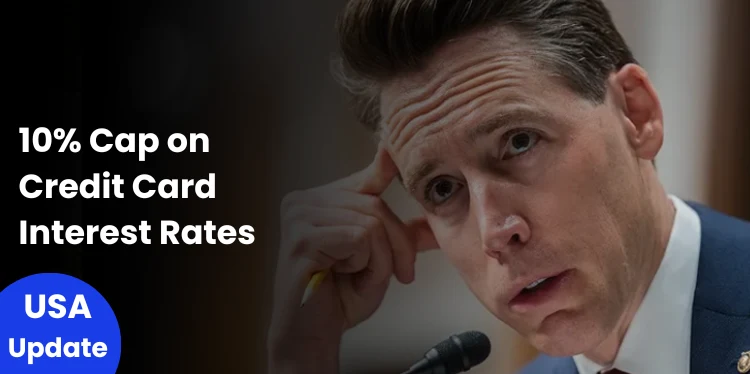Most economically conscious people understand that price controls are a bad idea. History has shown that artificially limiting prices often leads to shortages, rationing, and unintended consequences.
However, when it comes to credit card interest rates, this understanding disappears. Recently, Senator Josh Hawley (R-Mo.) joined with Senator Bernie Sanders (I-Vt.) to propose a 10% cap on credit card interest rates—a policy that, despite good intentions, would have devastating effects on consumers and the economy.
Arbitrary boundary problem
The proposal to cap credit card interest rates at 10% is arbitrary and disconnected from economic realities.
Credit card interest rates are not fixed in a vacuum; They reflect the risk that lenders take when lending unsecured debt.
For borrowers with low credit scores or shaky financial histories, higher interest rates cover the possibility of default. Capping rates at 10% would force lenders to either refuse to lend to risky borrowers or incur unsustainable losses.
This policy will hurt the very people it claims to help the most: middle- and lower-income people who rely on credit cards for emergency or urgent expenses. Without access to legal credit, many people will turn to loan sharks or illegal lenders, where the consequences of defaulting can be far more serious than a mark on a credit report.
Delusion of consumer protection
Proponents of capping interest rates argue that it protects consumers from “excessive” interest rates. While it is true that credit card interest rates are often higher than 20%, this is not the result of greed but risk-based pricing. Capping rates will not lower costs for most borrowers; Rather, costs will increase for people with good credit and access for people with bad credit will be cut off altogether.
In addition, credit card issuers are likely to reduce rewards programs, increase fees or tighten credit standards in response to caps on interest rates. Consumers who currently take advantage of cashback offers, travel rewards or low introductory rates will see these benefits disappear overnight.
The role of personal responsibility
It’s easy to blame credit card companies for high interest rates, but the root of the problem often lies in personal financial decisions. It’s rarely a good idea to carry a credit card balance from month to month, and consumers should only spend what they can afford. However, it is not the government’s role to regulate individual financial behavior.
Rather than imposing arbitrary limits, policymakers should focus on promoting financial literacy and personal responsibility. Educating consumers about the dangers of high-interest debt and the importance of budgeting will have far more impact than any government mandate.
Widespread influence
Capping credit card interest rates will also have broader economic consequences. Credit card issuers, many of which are large financial institutions, will face significant revenue losses. This can lead to job cuts, less investment in innovation and instability in the banking sector. Small community banks and credit unions, which already operate on thin margins, may be forced out of the credit card market entirely, reducing competition and consumer choice.
Also, the economy depends on the availability of credit. Consumer spending, which is a significant portion of gross domestic product (GDP), is often driven by credit card use. Limiting access to credit can lead to a decline in spending, slowing economic growth and possibly leading to a recession.
A better approach
Instead of imposing arbitrary interest rate caps, policymakers should focus on addressing the root causes of high credit card debt. For example, financial literacy programs can empower consumers to make smart lending decisions and avoid falling into debt traps. Additionally, promoting competition among credit card issuers may help lower interest rates naturally, without government intervention.
For those struggling with high-interest debt, there are already tools available, such as balance transfer cards and personal loans, that can help reduce interest costs. A more effective approach is to encourage the use of these alternatives rather than resort to heavy-handed regulation.
Conclusion
Capping credit card interest rates may seem like a simple solution to a complex problem, but it will ultimately do harm. By limiting access to credit, eliminating consumer benefits, and destabilizing the financial system, such a policy would harm the very people it claims to help. Instead of chasing the wrong regulations, we should focus on empowering consumers and promoting a competitive, transparent credit market. The path to financial security is not through government mandates, but through education, innovation and personal responsibility

